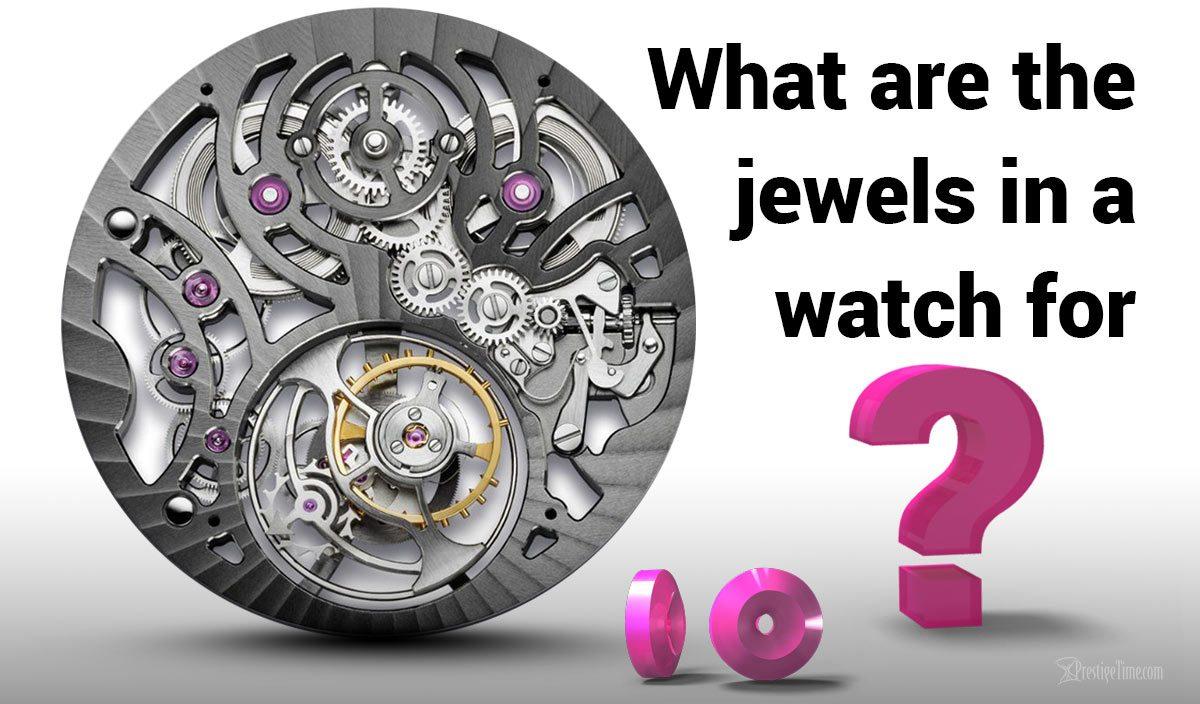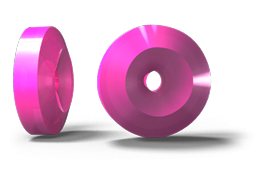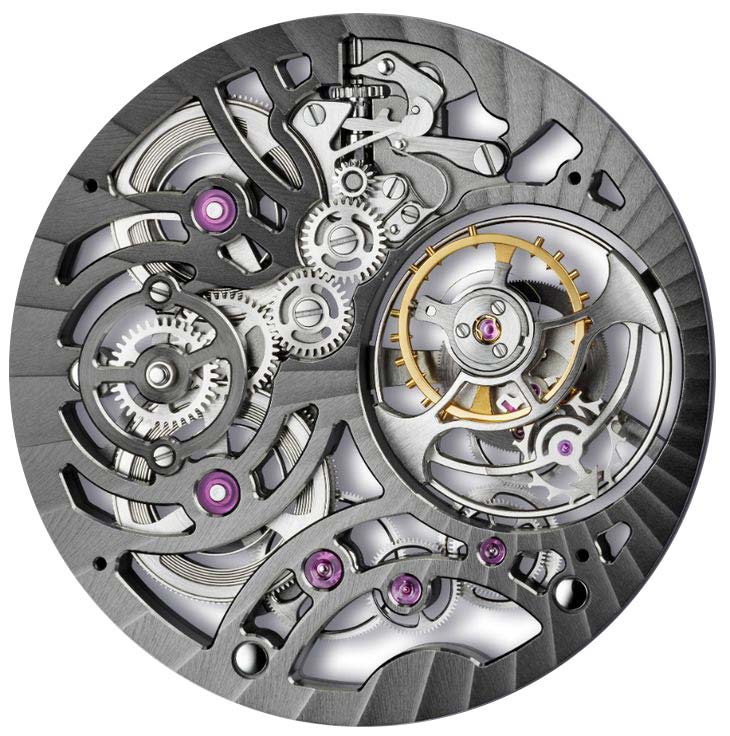
What Are The Jewels in a Watch For?
Read our eye-opening look at mechanical watches and allow us to explain what the jewels in watches are for and how watchmakers use jewels in the mysterious and centuries-old craft of watchmaking.
Ever ask yourself
"What are the jewels in a watch for?"
Mechanical watches use spring-wound movements and therefore don't require a battery. So what are watch jewels and exactly what do jewels do in a watch? Like any mechanical device, there are gears that need to move or rotate. Watches are no different and also use bearings and these bearings that are found in the higher-end automatic and hand-wound watches are made out of jewels. These precious stones are smooth and don't allow much friction and are therefore used in order to make the movement of these metal and precious metal gears easier.
So yes, there are actually precious gems in the movement of your watch and usually quite a few of them!
Back in the day, watchmakers used natural genuine rubies to create these bearings, and more recently, they adopted the use of lab-created rubies (also known as synthetic rubies) or sapphires. The purpose of these jewels is to act as bearings to various components in the watch specifically the parts that make contact and would normally wear down easily such as the escape lever and the impulse jewel.
Watchmakers use a few types of jewels:
Hole Jewels:
|  |
Cap Jewels: A cap jewel is a type of jewel without a hole bored into it which is used to minimize the balance staff's movement. Cap jewels usually are used in conjunction with a pivot jewel and have a type of shock protection in place such as a spring at each end. This protects the watch in the event that the watch is dropped or gets hit by something while being worn. |  |
Pallet Jewels:
|  |
Roller Jewels: A roller jewel is a type of jewel that is used as a connection point between the escape wheel and the pallets, and it sits inside the pallet fork. |  |
How many jewels should a watch have?
Most jeweled watches have around 17 jewels that are used in several areas:
- Balance Wheel
- One impulse jewel can be found in the assembly where the escapement level hits it.
- Staff Pivot
- Two pairs of jewels (a hole jewel and a cap jewel x 2) are used as pivot bearings on staff pivot.
- Center Wheel
- Two jewels (a hole jewel and a cap jewel) are used as a pivot bearing for the center wheel.
- Escape Lever Pallet
- Two pallet jewels are used in the escape lever pallet.
- Escape Lever
- Two jewels (a hole jewel and a cap jewel) are used as a pivot bearing in the escape lever.
- Fourth Wheel
- Two jewels (a hole jewel and a cap jewel) are used as a pivot bearing in the 4th wheel.
- Third Wheel
- Two jewels (a hole jewel and a cap jewel) are used as a pivot bearing in the 3rd wheel.
- Escape Wheel
- Two jewels (a hole jewel and a cap jewel) are used as a pivot bearing in the escape wheel.
What does 17 jewels mean?
A watch with 17 jewels is often called a fully jeweled watch. This means that it uses jewel (usually ruby) bearings in the mechanical movement from the balance wheel all the way to the center wheel pivot.
What does 21 jewels mean in a watch?
Similar to a 17-jewel watch that has a fully jeweled movement, but also has a few extra capstones added which are used to reduce positional errors. These extra stones are often found in higher-quality watches.
Are more jewels in a watch better?
First, ask yourself "Why are jewels in watches?". They are mainly used as bearings in a watch movement to reduce the friction between a watch's mechanical components protecting them from getting worn out. Around 17 stones are used on a standard mechanical jewel watch without any high-complications, in some cases, 21 jewels are used to minimize positional errors as mentioned above.
If the watch has high-complications such as a perpetual calendar watch, a chronograph (a watch with a stopwatch function), or a tourbillon watch, it will require having more components to add these functions and will therefore use more bearings. You'll also find that some ultra-thin watches use a higher number of jewels in their movements. It's not the jewels themselves that make the watch better but the number of jewels in a watch can indicate how mechanically complicated or in some cases, how thin a watch is.
Although the most jewels in a watch ever may be hard to track, oftentimes super-high complications watches have an unfathomable amount of jewels in the movement. An interesting read would be our article on the World's most complicated watch which had 242 jewels in the movement. Typically, the more complications are on the watch the more you can expect in the watch's movement since more bearings are needed to reduce friction between the many components needed to create said complications.
Do quartz watches have jewels?
The fact is that quartz watches have moving parts just like mechanical watches. However, not all quartz watches use watch jewels. Before the '70s, when battery-powered (quartz) watches were introduced with the advent of the Seiko Astron, all watches were mechanical and used about five to seven jewels in the watch's caliber.
To learn more about watch terminology, please visit our watch terminology page which is the world's leading dictionary for understanding watch terms and complications. Or use the search bar to look-up fascinating information about your favorite brand or favorite type of watch.
If you enjoyed this blog post and feel that others would enjoy it too, please like and share it. Thanks!
